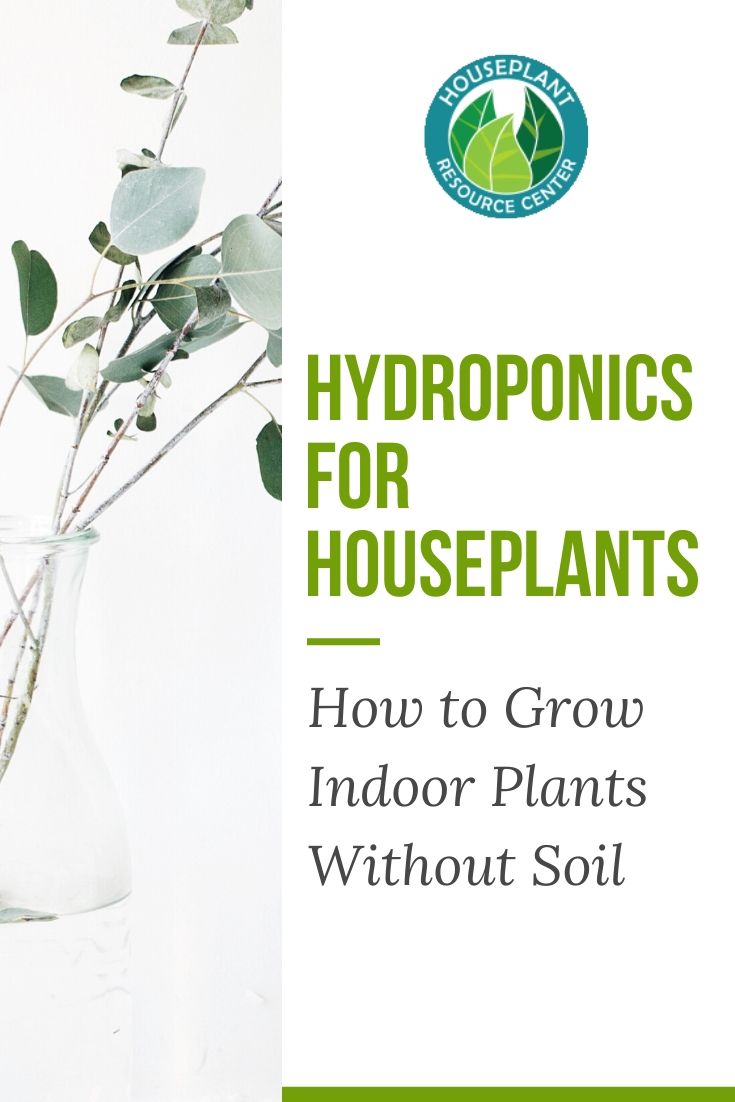Hydroponics for houseplants? What?
When you hear the word “hydroponics”, you probably think of large-scale indoor farms or pristine white warehouses full of plants that grow out of pipes. You probably think of complex drip watering systems and crazy contraptions that grow tomato plants upside down.
But did you know that you can utilize hydroponics for your indoor plants as well? Because you can!
What is hydroponics?
Hydroponics simply describes any method of growing plants without soil. This might mean the plant grows in water or in another sterile medium such as clay LECA balls, but not actual soil.
You’ve probably seen or performed plant propagation before where you take a cutting of a plant and stick it in water until it grows roots. Well, guess what? That’s hydroponics!
So why hydroponics? Here are some advantages to this growing method.
Advantages of Hydroponics for Houseplants:
Takes up less space. For food growers, this increases yield and for you, it means you can fit more houseplants in a smaller space! Score!
Plants are less vulnerable to insects. Pests like the dark, damp conditions that often occur with soil. But insects don’t do well in water, clay, sand, or other hydroponic growth mediums.
Plants grow faster and larger. Without soil, plants are able to absorb nutrients faster through water and grow larger, healthier root systems because there is less dense soil blocking root formation.
Prevents over and underwatering. Think about it: if a plant lives in water, it clearly will not be underwatered, and without soil, the fungus and bacteria that cause root rot from overwatering are not present. It’s the best of both worlds!
So how do you get started?
Hydroponics for Houseplants: How to Get Started
If you want to get into this for indoor gardening, you can purchase ready-made kits to grow herbs and vegetables inside! They can get pricey, but it’s a really accessible way to start a home garden if you don’t have an outdoor space.
While commercial hydroponic systems and even those in home gardens can get pretty complex (and ingenious), the easiest way to use this method for your houseplants is to grow plants in a container of water.

Step 1: Pick your plant
First, pick a plant that will actually grow with this system. Here’s a list to get you started!
Houseplants that do well with hydroponics:
- Philodendron
- Money tree
- Peace lily
- Spider plant
- English ivy
- Geranium
- Lucky bamboo
- Coleus
- Wandering Jew
- Chinese evergreen
- Pothos
If you’re curious about a plant that we didn’t mention, give it a quick Google.
Step 2: Choose your container
Select a container that will allow your plant to stand upright. This might be a container with a narrow neck like a vase or bottle. Glass and ceramic containers work best, but make sure to avoid metal, as this can leach heavy metals into your water.
Transparent containers work well, but opaque containers can inhibit the growth of algae, so keep that in mind as well.
You can get really creative here and find some gorgeous containers. Thrifts shops are a great resource!
Step 3: Place your plant in the container
Pretend that you’re propagating with stem cuttings and take a cutting with a node from the plant you want to grow. (Check out this post if you need a quick refresh on how to do this.)
Tip: Try our Propagation Promoter to increase rooting and protect your cutting from disease!
You can also transfer a plant from soil to water. Carefully remove the soil-grown plant from its container and remove as much of the soil from the roots as possible. Massage the roots and break up the chunks of soil, being extremely careful not to break the roots. If this gets difficult, run the roots under lukewarm tap water to remove all the soil.
Then, transfer the plant to a container of water.
Place the plant in a clear glass container of well water, spring water, or rainwater. Do NOT use chlorinated tap water or filtered water. The chemicals and salts used in filtration can kill your plants!
If all you can get is tap water, leave it sitting out at least overnight so the chlorine can dissipate.
Make sure the plant can stand upright. If your plants can’t stand up in your container, you can add clean pebbles or marbles to support the stems.
Note: Make sure to protect your furniture! Try sticking felt feet to the bottom of your container or placing it on a decorative saucer or container, or on a mat. You can also find containers with feet or a pedestal!
Step 4: Add more water and fertilizer.
Add more bottled or distilled water to keep the container full. Every so often, add a few drops of liquid fertilizer once a month or so. Our Indoor Plant Food is designed with this in mind!
Roots will start to form within a few weeks for most plants. Instead of planting the cutting in soil, simply leave it in the water!
Hydroponics can be a great system for growing healthier plants, and it can look beautiful! Give this water method a try, or you can look into growing plants in LECA balls, sand, coconut fiber, etc.
This might be your new favorite houseplant hack!




